How does brake work?
Brakes in a vehicle perform the crucial function of slowing down or stopping the vehicle by converting kinetic energy (the energy of motion) into heat energy through friction. This process is essential for vehicle safety and control. The importance of friction material in the braking system cannot be overstated, as it plays a central role in this conversion of energy and overall braking performance.
Brake Operation
- When you press the brake pedal, it activates the brake system, initiating the braking process.
- Hydraulic pressure is generated and sent to the brake components at each wheel (either brake pads for disc brakes or brake shoes for drum brakes).
- The brake components press against a spinning surface (brake rotor for disc brakes or brake drum for drum brakes) on each wheel.
Friction Generation
- The key to braking is friction. The friction material, which is part of the brake pads or brake shoes, comes into contact with the spinning surface.
- As the friction material rubs against the surface, it generates frictional force, which opposes the wheel's rotation
Slowing Down or Stopping
- The friction between the friction material and the spinning surface converts the vehicle's kinetic energy into heat energy.
- The resistance created by the friction between the friction material and the spinning surface results in the wheel slowing down or coming to a complete stop.
- Effective friction material ensures that the braking force can be modulated for smooth and safe deceleration.
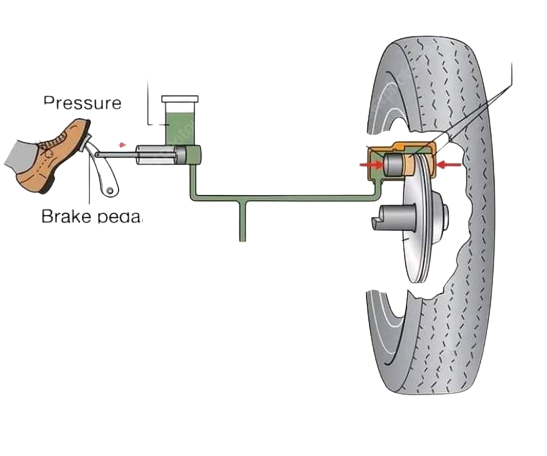
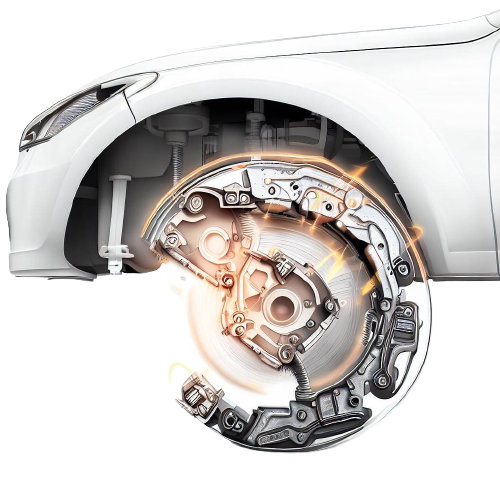
What are the types of brake?
Drum brakes and disc brakes are two common types of braking systems used in vehicles, each with its own design and working principles.
Drum Brakes
Drum brakes are often found in the rear wheels of many vehicles and were more commonly used in older cars. They consist of the following key components:
- Brake Drum: This is a cylindrical-shaped drum attached to the wheel hub. When you apply the brakes, friction is generated between the brake shoes and the inner surface of the drum to slow down or stop the vehicle.
- Brake Shoes: Inside the drum, there are two semi-circular brake shoes. Each shoe has a friction lining material on its outer surface. One end of each shoe is anchored, and the other end is connected to a mechanism, often called the "wheel cylinder" or "slave cylinder."
- Wheel Cylinder: The wheel cylinder is responsible for pushing the brake shoes against the inner surface of the drum when you press the brake pedal. It contains pistons that move outward when hydraulic brake fluid is forced into the cylinder, causing the brake shoes to press against the drum.
When you press the brake pedal:
- Hydraulic brake fluid is sent from the master cylinder to the wheel cylinders.
- The wheel cylinders push the brake shoes outward against the inner surface of the drum.
- Friction is created between the brake shoes and the drum, causing the drum and the wheel to slow down or stop.
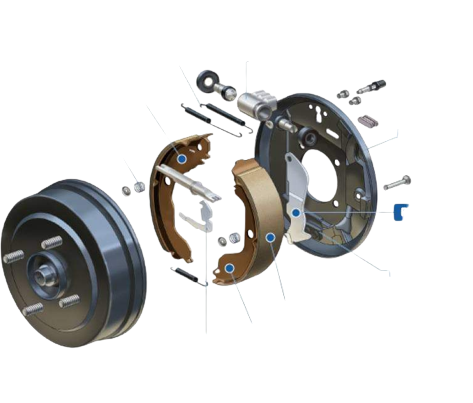
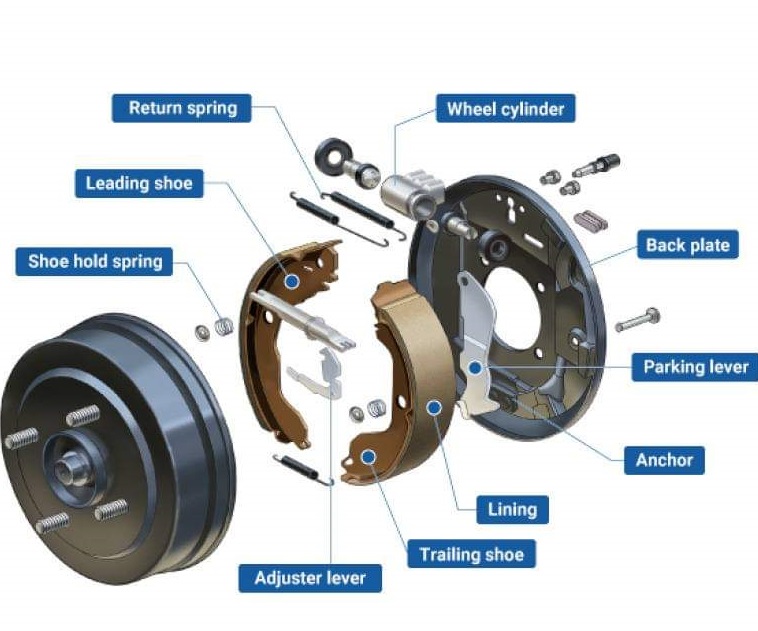
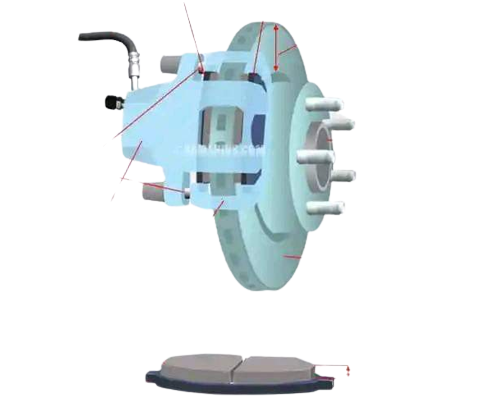
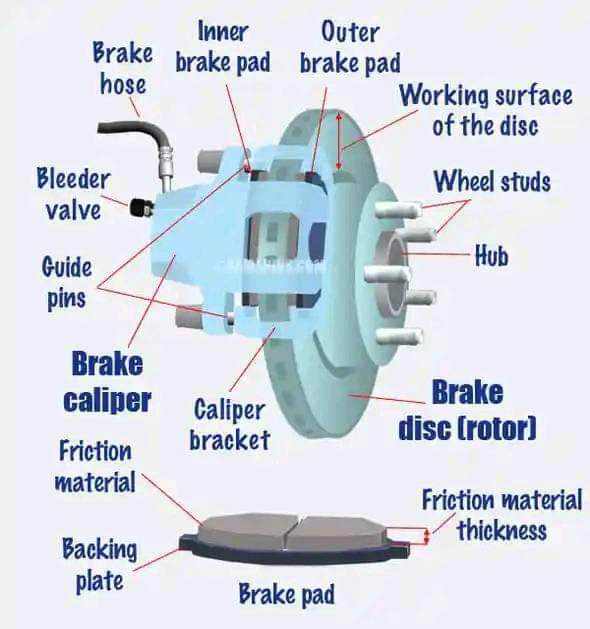
Disc Brakes
Disc brakes are more commonly used in the front wheels of vehicles and are also used in some rear-wheel applications. They consist of the following main components:
- Brake Disc (Rotor): A disc-shaped rotor is mounted on the wheel hub. This rotor rotates with the wheel.
- Brake Caliper: The caliper is a clamp-like device that holds one or more brake pads and straddles the brake disc. It is typically mounted on a bracket.
- Brake Pads: Brake pads are flat, rectangular-shaped components with friction material on one side. They are held in the caliper and are pressed against the rotating brake disc when you apply the brakes.
When you press the brake pedal:
- Hydraulic brake fluid is sent from the master cylinder to the brake caliper.
- The caliper's pistons push the brake pads against the spinning brake disc.
- Friction is generated between the brake pads and the disc, causing the disc and the wheel to slow down or stop.
Compared to drum brakes, disc brakes generally provide better heat dissipation and braking performance, making them the preferred choice for front brakes in most modern vehicles. However, drum brakes are still used in some rear-wheel applications due to their cost-effectiveness and simplicity.
